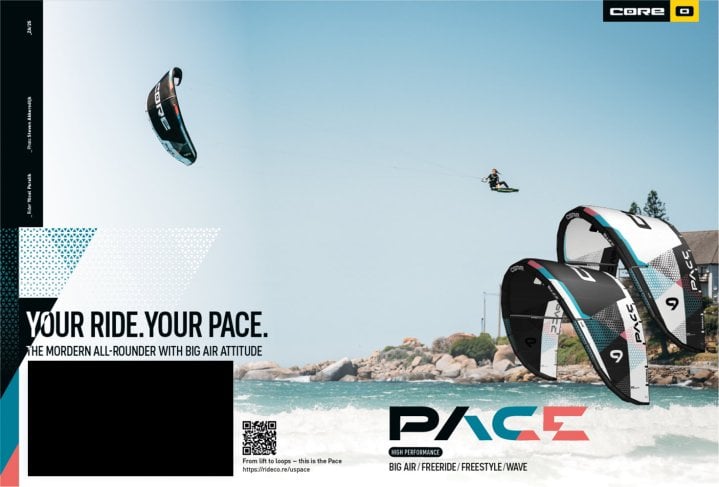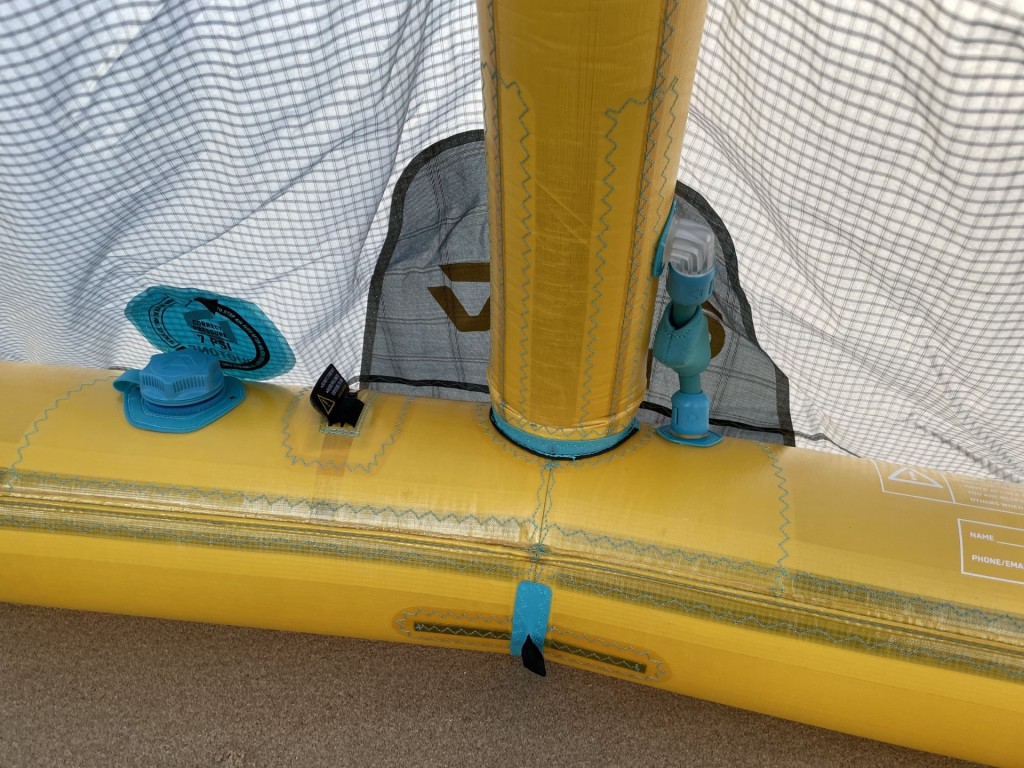At A Glance
The all-new Duotone Neo D/LAB has finally arrived! Kiters who love the Neo are going to be interested to see this new iteration of the kite featuring the new Aluula material. The kite has also been redesigned around this new material to ensure it achieves the ultimate flying characteristics. It's still a three-strut wave kite designed to offer the ultimate in performance, but it takes the DNA from the original and SLS constructions and adds steroids.
Aluula has a few benefits; primarily, it is lighter but also stiffer. While this makes it tricky to work with, brands that have invested the time into getting the construction right can reap weight savings of up to 30%, which equates to a 1kg saving on some sizes. That's a huge amount, especially when a lighter kite will fly in less wind and deliver more power.
The new Neo D/LAB uses this Aluula material on the leading edge and centre strut. It replaces the Dacron on the original construction and the Penta TX on the SLS version. The canopy uses the Trinity TX material seen across all kites in the Duotone range. Flex struts are used on the two outer struts to allow the kite to twist and have the same dynamic performance that fans of the Neo love.
Sizes: 7, 8, 9, 10, 11, 12
In The Air
I've been lucky enough to fly the new Neo D/LAB a fair bit, both in Sicily at the product launch and at home in Wales. While this is specifically a test for the 10m, I have ridden the 8 and 7 a fair bit, too, and have been really impressed across the board. First up, this kite is expensive, and it won't be for everyone. You can still get similar performance from the original and SLS constructions, but if you want the absolute pinnacle in performance for your riding, then the D/LAB version is where it is at.
My first impressions are that it is still very much a Neo; the bar is reasonably light, with enough feedback to let you know where the kite is at all times. The steering is dynamic and responsive, and the kite handles exceedingly well in onshore conditions where you need it to turn fast. The big takeaway, though, is the bottom end of the kite. I've tried wave riding with bigger kites in the past, and it's never felt "right". I'm gonna go out on a limb and say that in light winds, the 10m is one of the best wave kites I've flown. It actually works.
This is largely thanks to that huge weight saving. The upstroke of the kite is phenomenal, and it really climbs up the window in a manner I haven't really experienced before from a Neo. This allows you to generate lots of apparent wind with ease and lots of low-down power. I was in Sicily riding the 7m on a surfboard when most people were on 12m kites. I won't say I was ripping, but it worked. With a small kite, I could ride and generate so much power in really light wind.
The light nature also makes it easy to fly in light winds. If you have the skills, you can get this kite going in 6-7 knots with a foil. That's a pretty incredible feat! Even launching on the beach when you think it's never going to fly, it soars up into the sky.
On the wave, this means incredible handling and unbelievable drift. The kite hangs in the air with ease as you ride down the line, and in conditions where the lines are slack, you get valuable seconds to get tension back into the lines and save it in a pinch. Turning speed is lightning fast. Overall, the kite feels very natural to fly.
The relaunch is excellent; the kite comes up easily, and when it was really light, we even reverse-launched it a few times with an armful of back lines - a handy trick if you crash it in light winds foiling.
Who's it for? For the riders who want the ultimate in performance for wave riding and foiling, the Neo D/LAB will help you take your riding to the next level. It won't be for everyone, and the cost will see to that, but if you get a chance, try and demo one just to experience it…
Overall
The new Neo D/LAB certainly impressed us. If you ride in light winds, it's a no-brainer. It will open up a lot of opportunities to get on the water and ride waves when you might not have been able to. The cost is going to test the boundaries of the market, but just like we have Lamborghinis and Fords, we are going to see more and more high-end gear filling the market space.
It's the same in most sports, and it's the same here. The Neo is available in the original Dacron and Trinity TX version as an entry-priced kite, then you have the SLS with Penta TX and Trinity TX, offering a little more performance at a slightly higher cost, and, finally, the D/LAB with Aluula and Trinity TX sits right at the very top. The D/LAB is the pinnacle of material and product design… If that sounds like your thing, then you won't be disappointed!
Videos
This review was in Issue 96 of IKSURFMAG.
For more information visit DUOTONERelated
By Rou Chater
Rou has been kiting since the sports inception and has been working as an editor and tester for magazines since 2004. He started IKSURFMAG with his brother in 2006 and has tested hundreds of different kites and travelled all over the world to kitesurf. He's a walking encyclopedia of all things kite and is just as passionate about the sport today as he was when he first started!






























